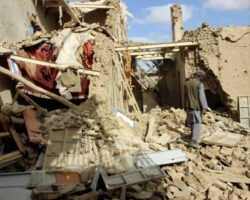
➪ see full-text: HTML
By Carl Conetta, Reset Defense Blog, 04 February 2021.
This article (with extensive bibliography) surveys, at the 20-year mark, the consequences of the US regime change, occupation, and nation-building exercise in Afghanistan. Drawing on US DOD and congressional research agency reports, media investigations, and NGO analyses it anchors the broad public impression of full-spectrum failure. It reviews the human and financial costs of the war, the failures of reconstruction, and the ongoing dysfunction of Afghan governance.
America’s debacle in Afghanistan, which echoes the Soviet failure during the 1980s, indicates that nations are not the type of thing that can be built according to a foreign blueprint, and especially not at the point of a gun. Outsiders lack the knowledge, indigenous roots, legitimacy, and degree of interest to prevail. Indeed, their very presence is provocative, especially given differences in language, religion, and culture.
Why is withdrawal so difficult? The article concludes that domestic political and institutional considerations are more important than any strategic rationale or cost-benefit analysis. Once committed, no political or military leader, nor the Pentagon cares to own responsibility for failure. And hubris generates an endless succession of imagined “new paths” to success. But as success proves forever elusive, so does withdrawal. In a perverse sense, it is persistent failure that keeps America mired for decades in this and other desultory wars.
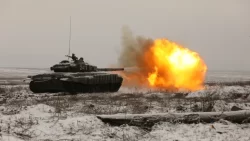 The battle within Ukraine and the USA-Russia contest over it has returned Europe to the darkest, most ominous period of the 1947-1989 Cold War. That this should happen with both the United States and Russia barreling grimly forward reflects a singular failure of diplomacy and common sense. There were two recent points in time when positive leadership might have turned us away from the path of disaster. Fortunately, one of these is not yet foreclosed. The short essay examines them both, asking how did we get here? It concludes with the question: Is it harder to live with autonomy for the Ukrainian rebel areas than it is to face regional war?
The battle within Ukraine and the USA-Russia contest over it has returned Europe to the darkest, most ominous period of the 1947-1989 Cold War. That this should happen with both the United States and Russia barreling grimly forward reflects a singular failure of diplomacy and common sense. There were two recent points in time when positive leadership might have turned us away from the path of disaster. Fortunately, one of these is not yet foreclosed. The short essay examines them both, asking how did we get here? It concludes with the question: Is it harder to live with autonomy for the Ukrainian rebel areas than it is to face regional war?
 The basic elements of a solution to the Ukraine crisis are ready at hand – and have been since Feb 2015. These are the provisions of the Minsk II Protocol. This
The basic elements of a solution to the Ukraine crisis are ready at hand – and have been since Feb 2015. These are the provisions of the Minsk II Protocol. This 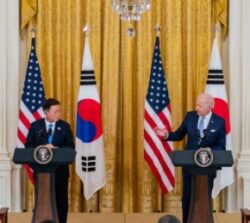



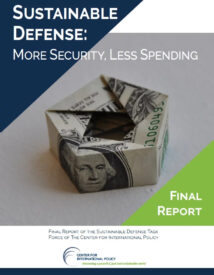
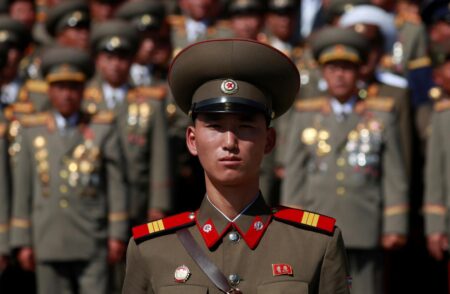
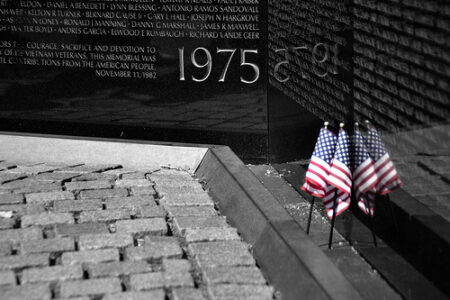
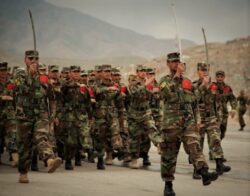 The most serious deficit of the Afghan National Security Forces…is its lack of motivation in comparison to the Taliban. One of the primary lessons unlearned from Vietnam, Iraq, and Afghanistan is that soldiers in the armies we create, train, and equip are simply not willing to fight and die for weak, corrupt, illegitimate governments.
The most serious deficit of the Afghan National Security Forces…is its lack of motivation in comparison to the Taliban. One of the primary lessons unlearned from Vietnam, Iraq, and Afghanistan is that soldiers in the armies we create, train, and equip are simply not willing to fight and die for weak, corrupt, illegitimate governments.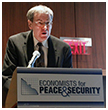


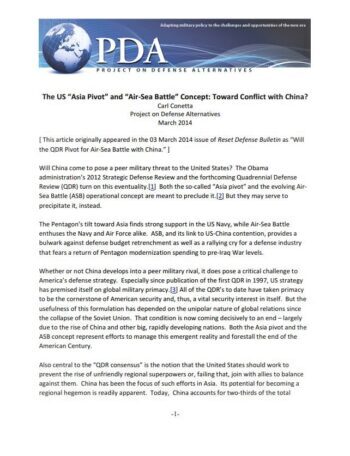
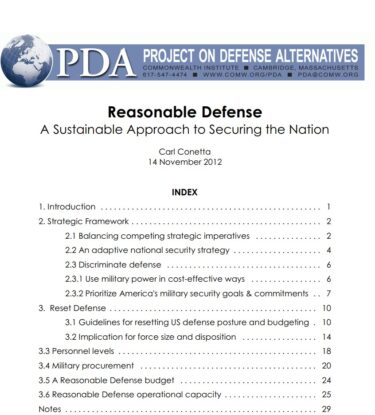 Argues for a new balance among the various instruments of national power reflecting today’s strategic conditions. Taking a realistic view of security needs, the report advocates a military 20% smaller than today’s. It advances a “discriminate defense” strategy that would focus the military on cost-effective missions and save $550 billion more than official plans over the next decade.
Argues for a new balance among the various instruments of national power reflecting today’s strategic conditions. Taking a realistic view of security needs, the report advocates a military 20% smaller than today’s. It advances a “discriminate defense” strategy that would focus the military on cost-effective missions and save $550 billion more than official plans over the next decade.